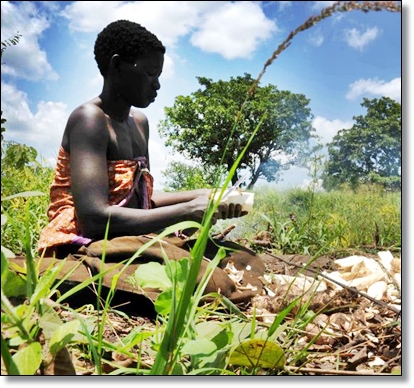Agriculture in Uganda: Current Status and Future

 |
| A Ugandan woman peels her cassava Photo courtesy |
Some questions that I grappled with - and invite readers to reflect on - include: Why are majorities in Uganda farmers? Do they fancy it? Is farming in Uganda rewarding? What has been the role of officialdom in shaping the architecture of Uganda’s agriculture sector? Will the agriculture sector provide jobs for Uganda’s huge and expanding population? Why aren’t farmers pocketing the windfall accruing from high local and global food prices?
There are many explanations to the above questions that exceed the scope of this article. There are supply and demand forces that are too serious and too diverse. Bill Gates in his 2012 letter captures part of this… “We can be more innovative about delivering solutions that already exist to the farmers who need them,” ….. “Knowledge about managing soil and tools like drip irrigation can help poor farmers grow more food today.”
For now, I attempt to articulate my thoughts on the last question. The reason farmers are not harvesting the price dividend is two-fold:
a) Costs of farm production are increasing at a higher rate than what the local markets, regional and even global markets can offer. There is no farmer capacity for cost-benefit analysis, necessary to project margins across the farmers’ fraternity. I thought groups like Enterprise Uganda would be doing this.
b) Weak farmer agency at individual and collective level. With limited access to information, farmers have limited capacity and stamina to make independent choices and decisions around efficient production and governance of markets. The solution largely depends on instituting strong producer organizations to negotiate farmer interests and how farmers harness information technology.
The fault-line in Uganda’s agricultural policy
Agricultural policy in Uganda is a broken brick with no clear governance locus. Policy documents are as numerous as institutions that run them - whose mandates clash and mostly engage in out-maneuvering each other. Discord in policy formulation, implementation and monitoring has left farmers at the margins striving to find affordable and authentic inputs. While farmers sweat to scale up productivity, ‘pray’ for rains and seek resilient and rewarding markets, associations through which farmers can exercise moderation, agency and organize to navigate officialdom are weak, uncoordinated and suffocating under the weight of elite and political capture.
The question of agriculture governance must be resolved. Where should farmers go for services? To the National Agricultural Advisory Services? Uganda Coffee Development Authority? Cotton Development Authority? Dairy Development Authority? National Agricultural Research Organization? Ministry of Agriculture Animal Industry and Fisheries (MAAIF)? Ministry of Local Government? Prime Minister’s Office? Uganda Industrial Research Institute?
While interventions like the National Agriculture Advisory Services (NAADS) are structured as social safety net programs distributing hoes and cassava planting materials, what transforms agriculture is stimulation of agribusiness.
I think the president should expunge NAADS and reconfigure it to meet the challenges of a new age.
By Morrison Rwakakamba
The author mrwakakamba@gmail.com is an Independent Researcher and Public Policy Analyst.
